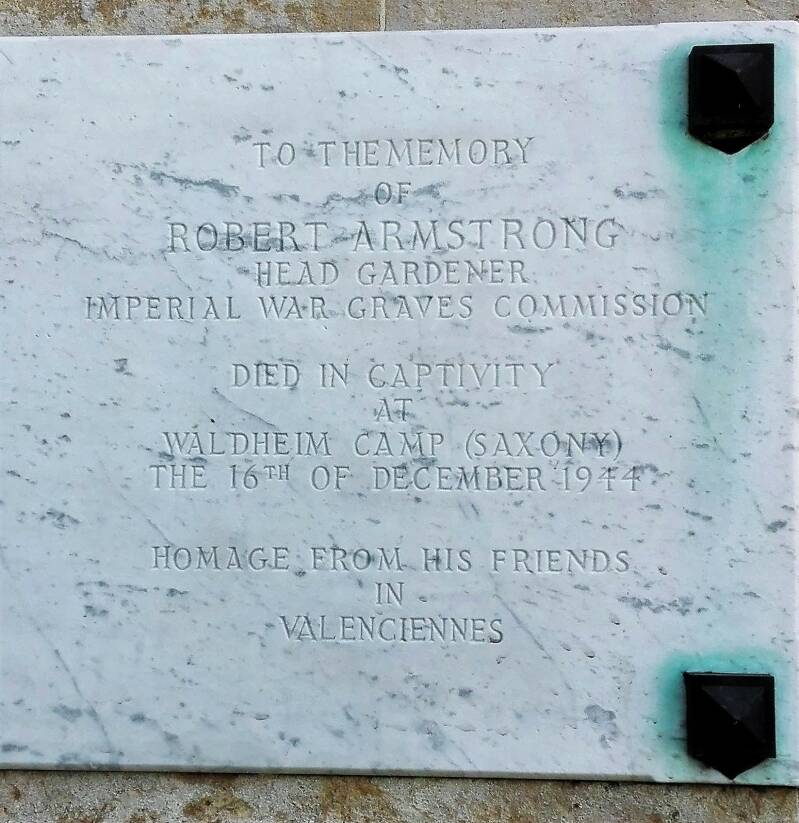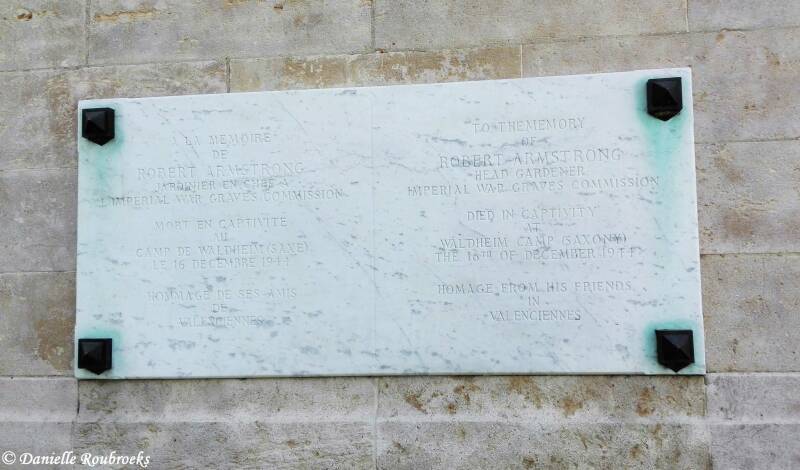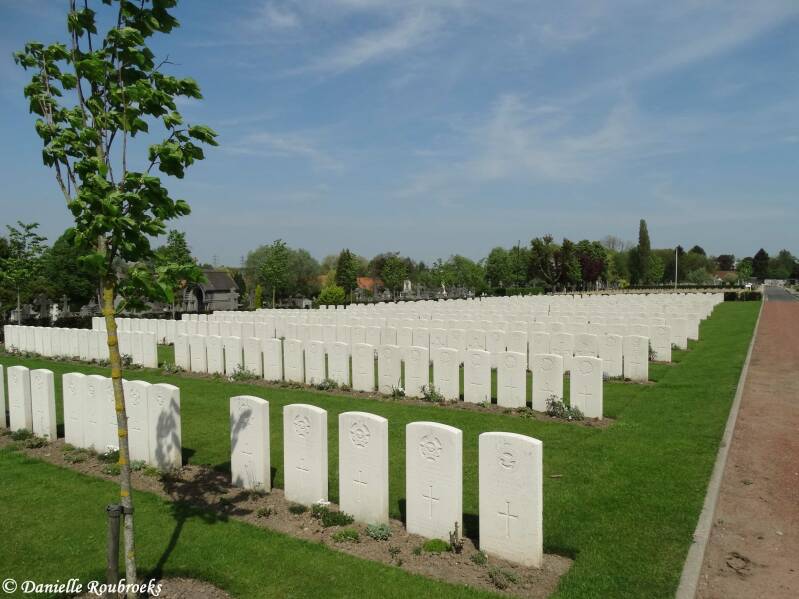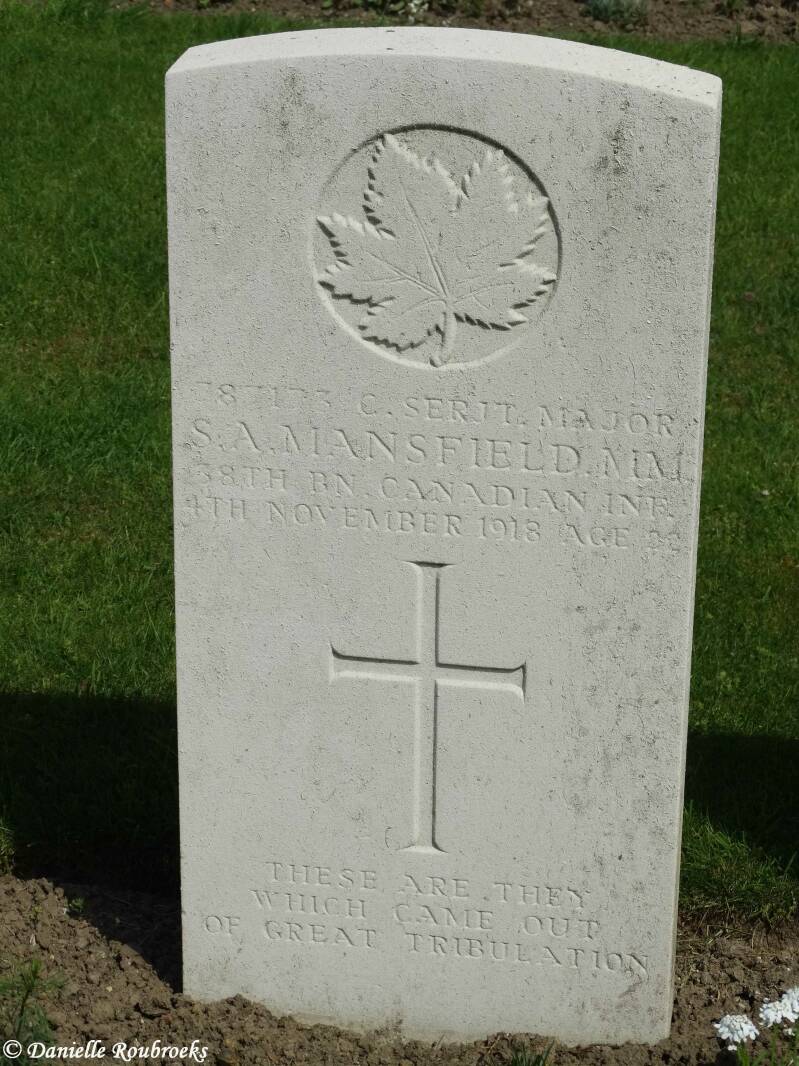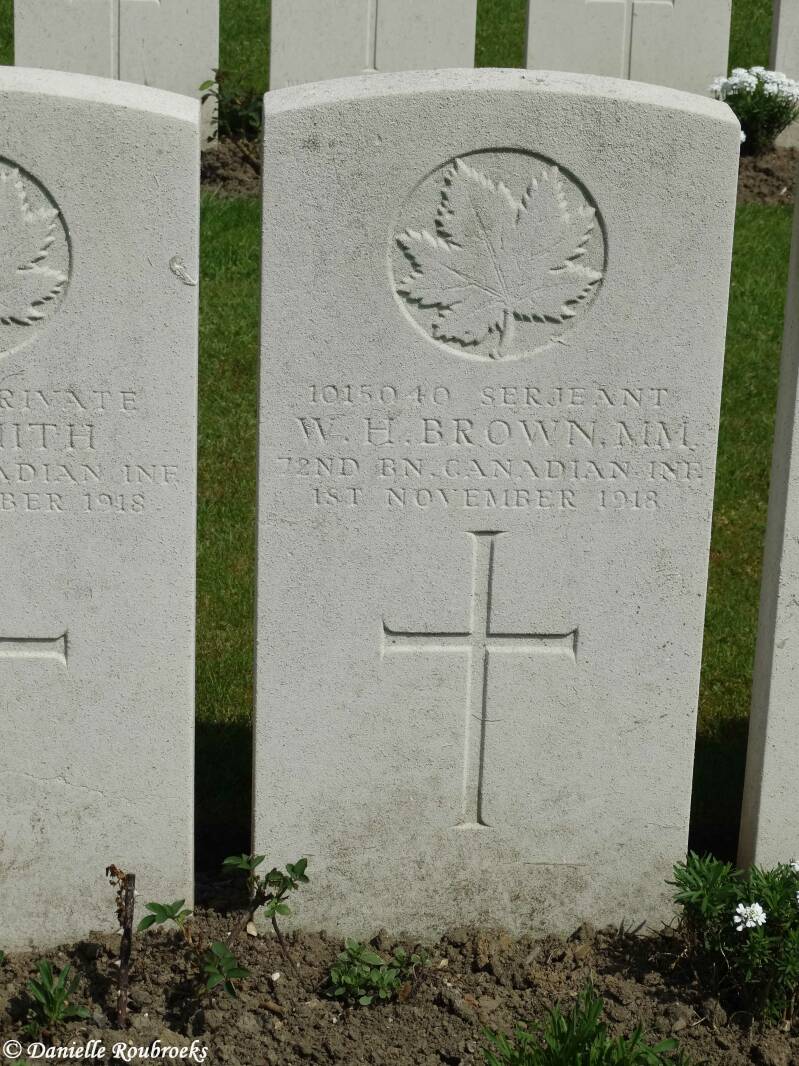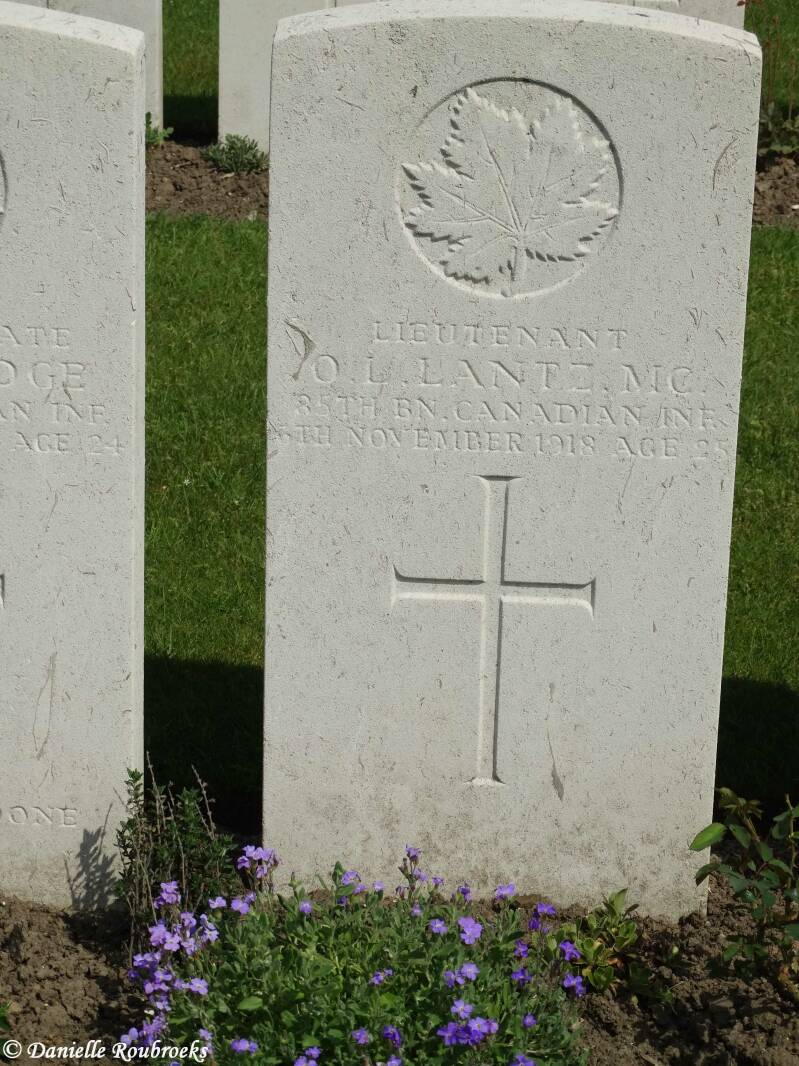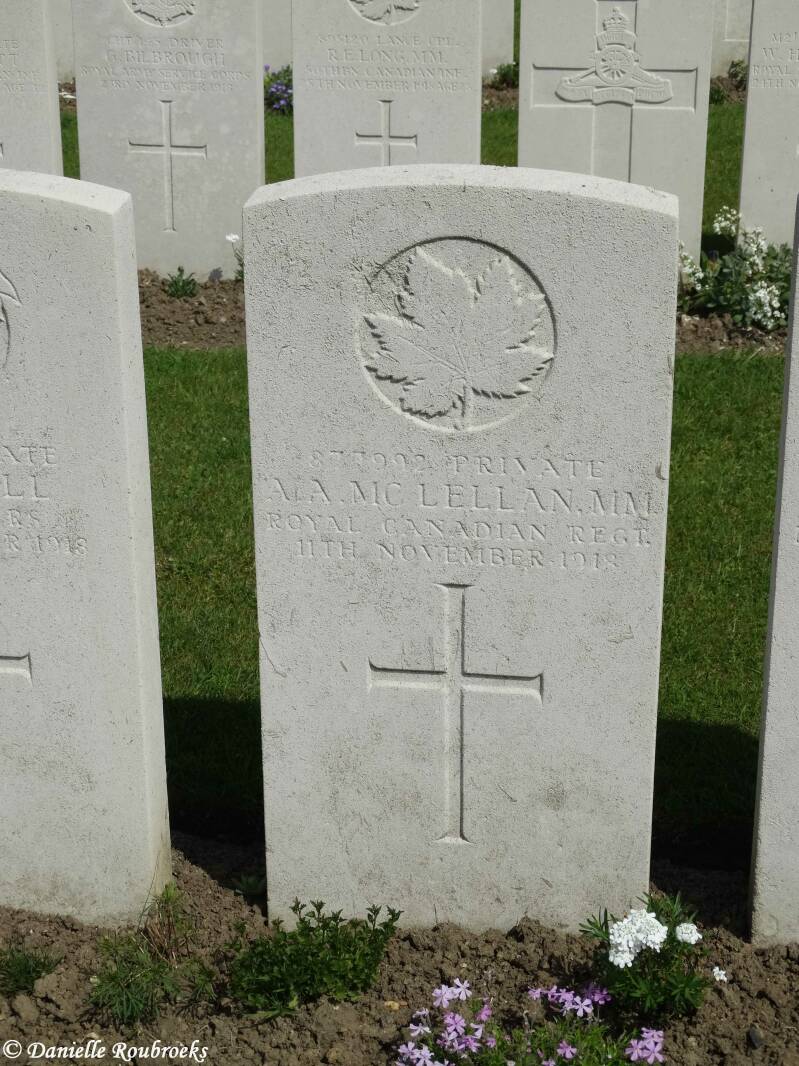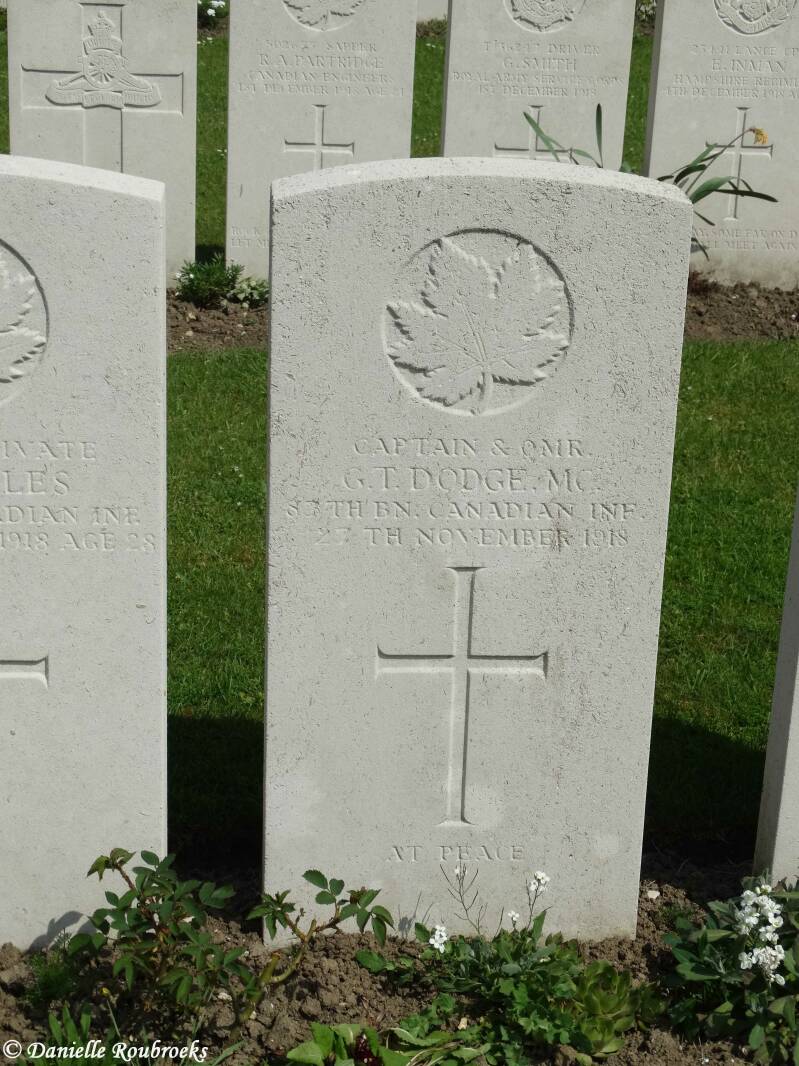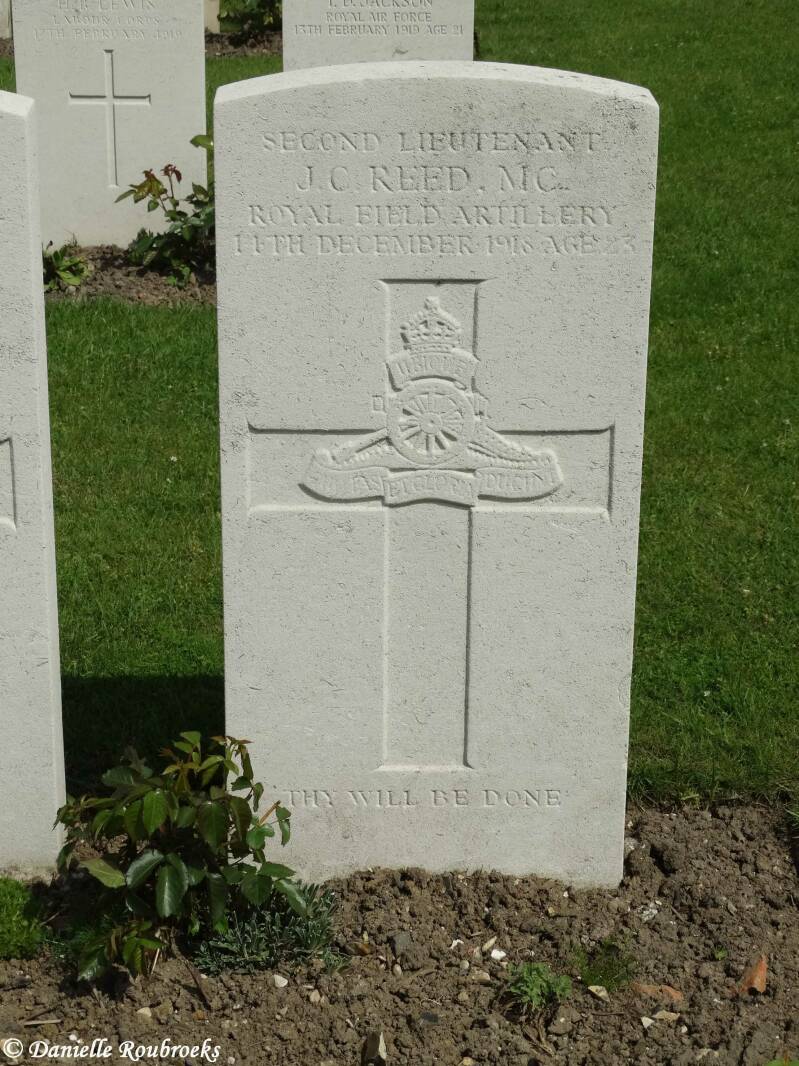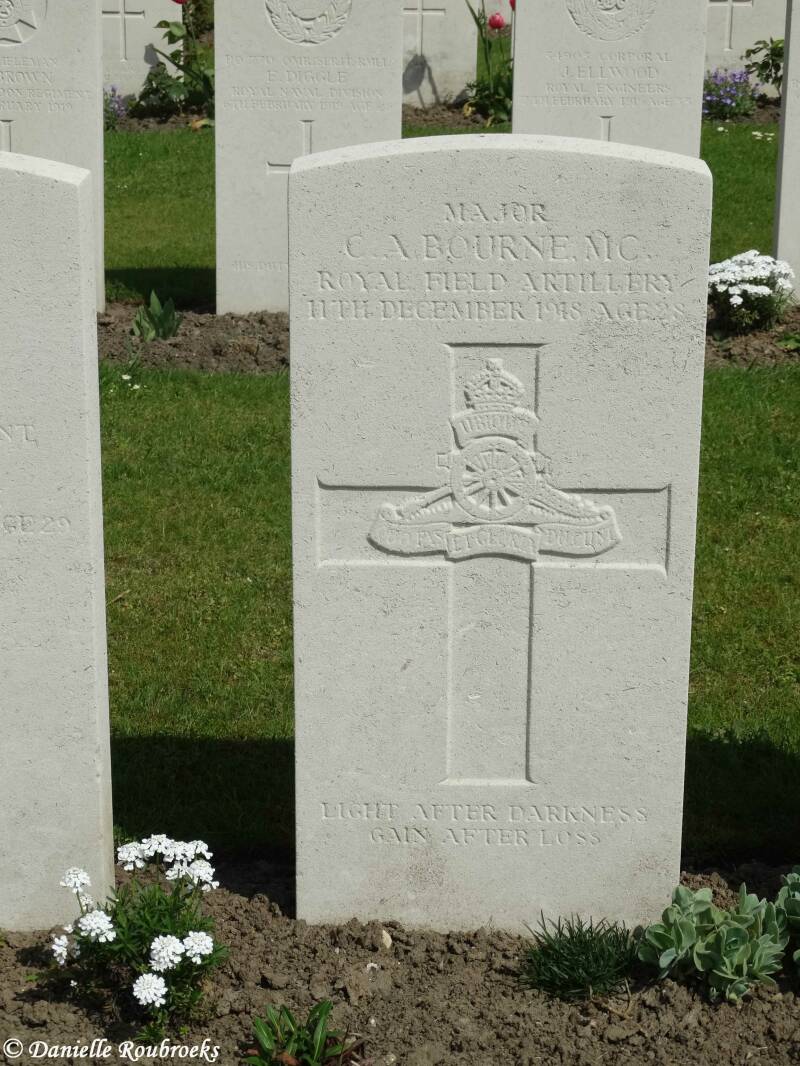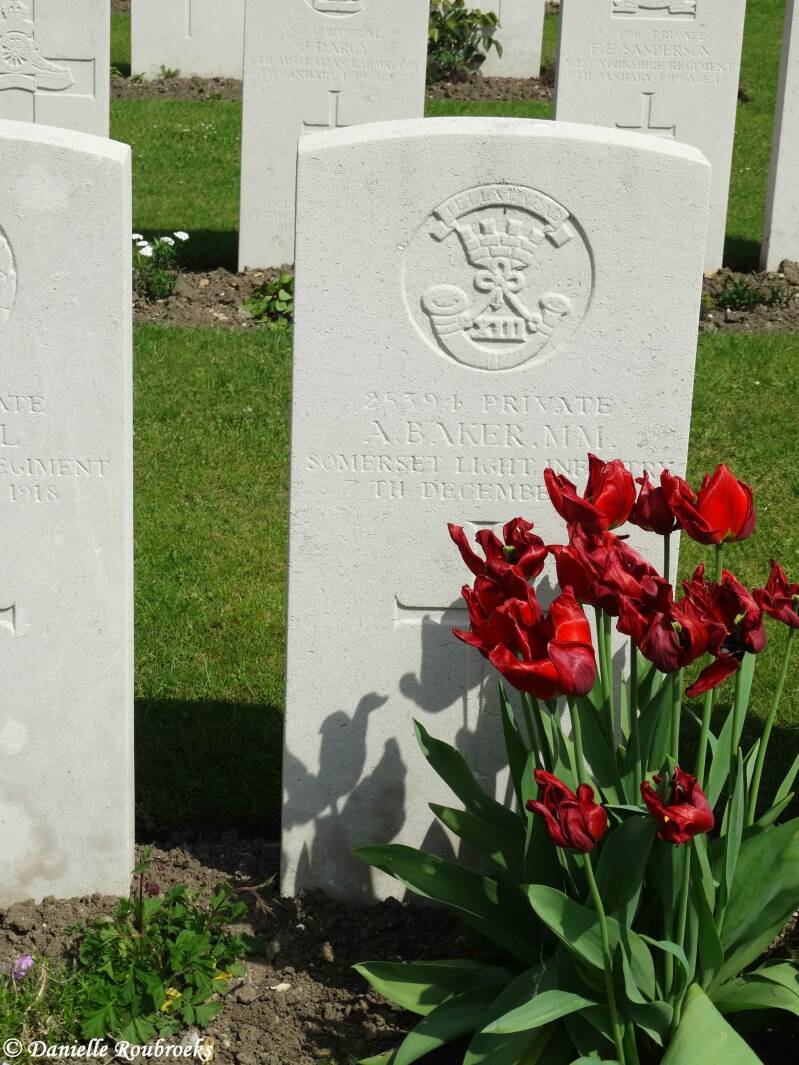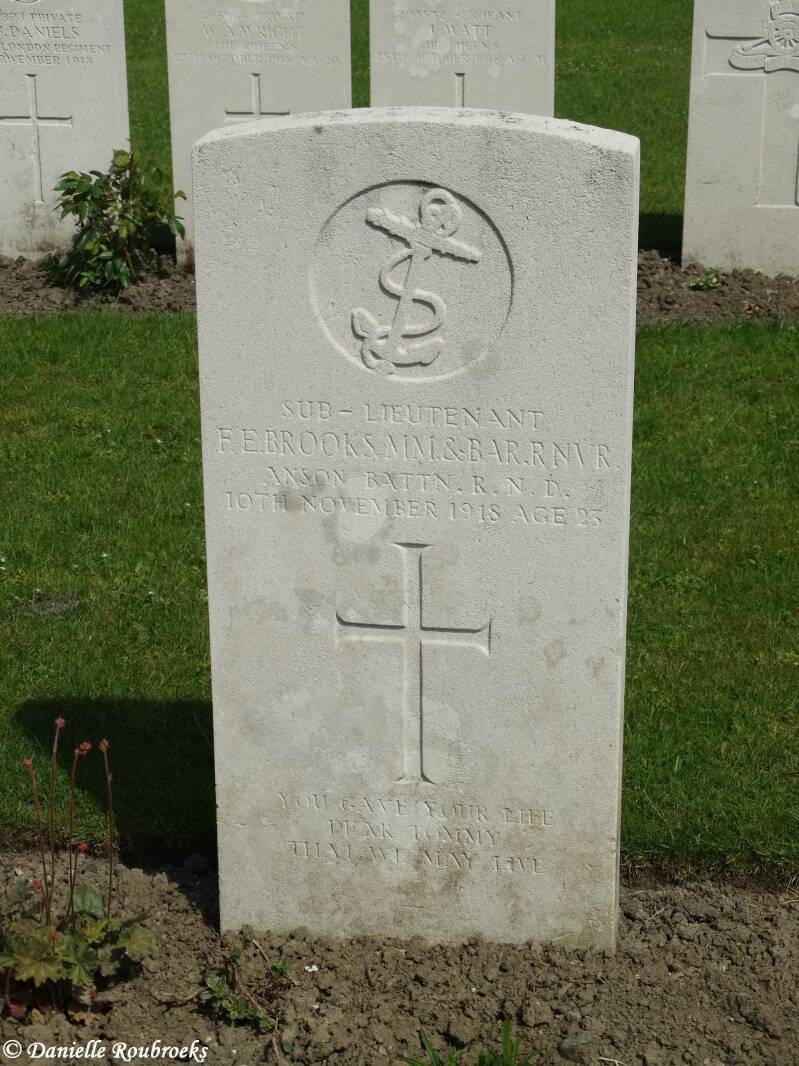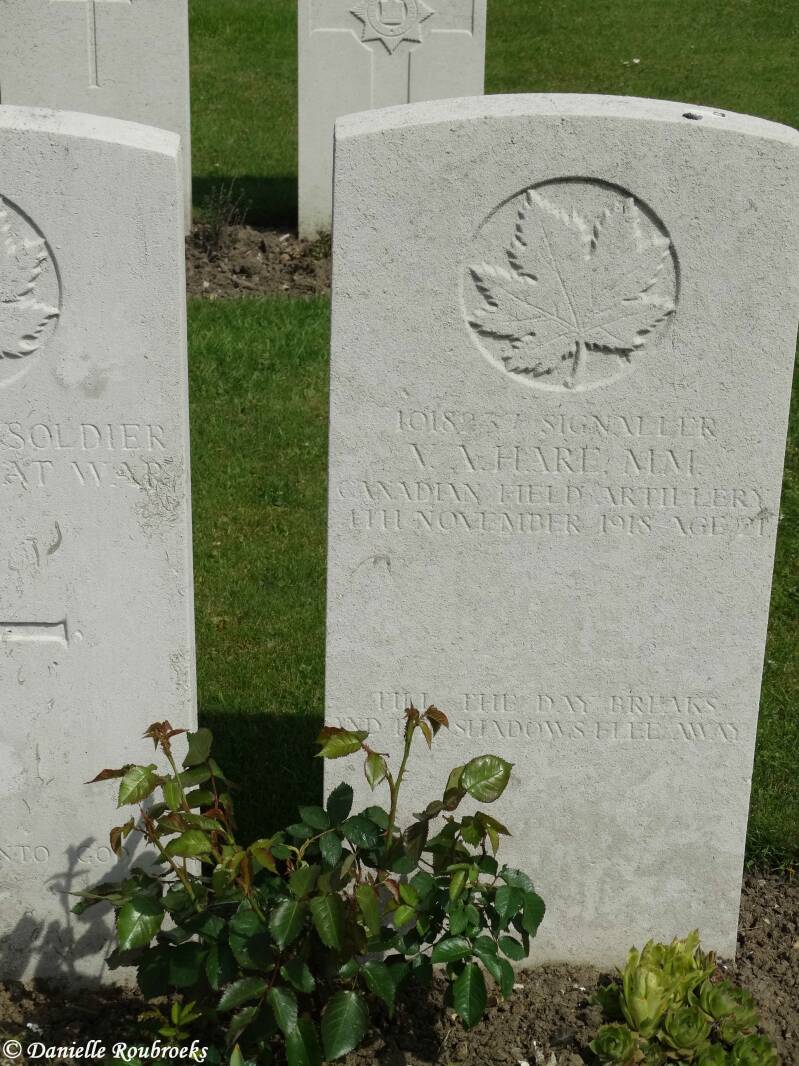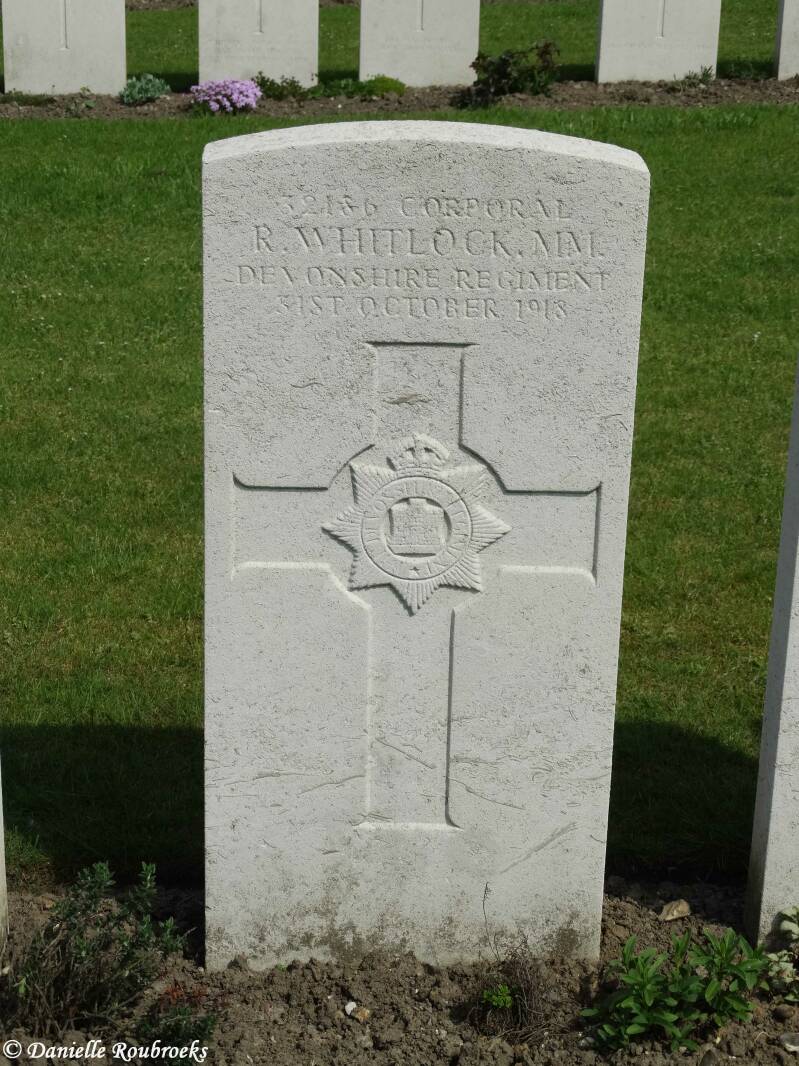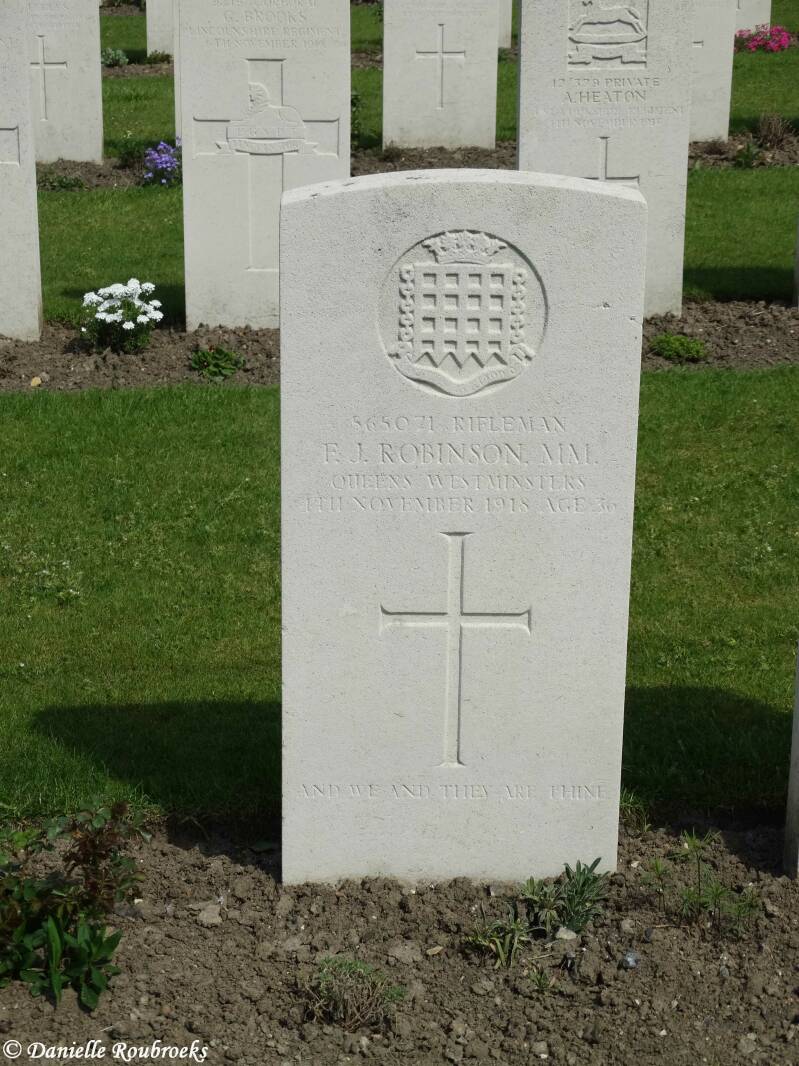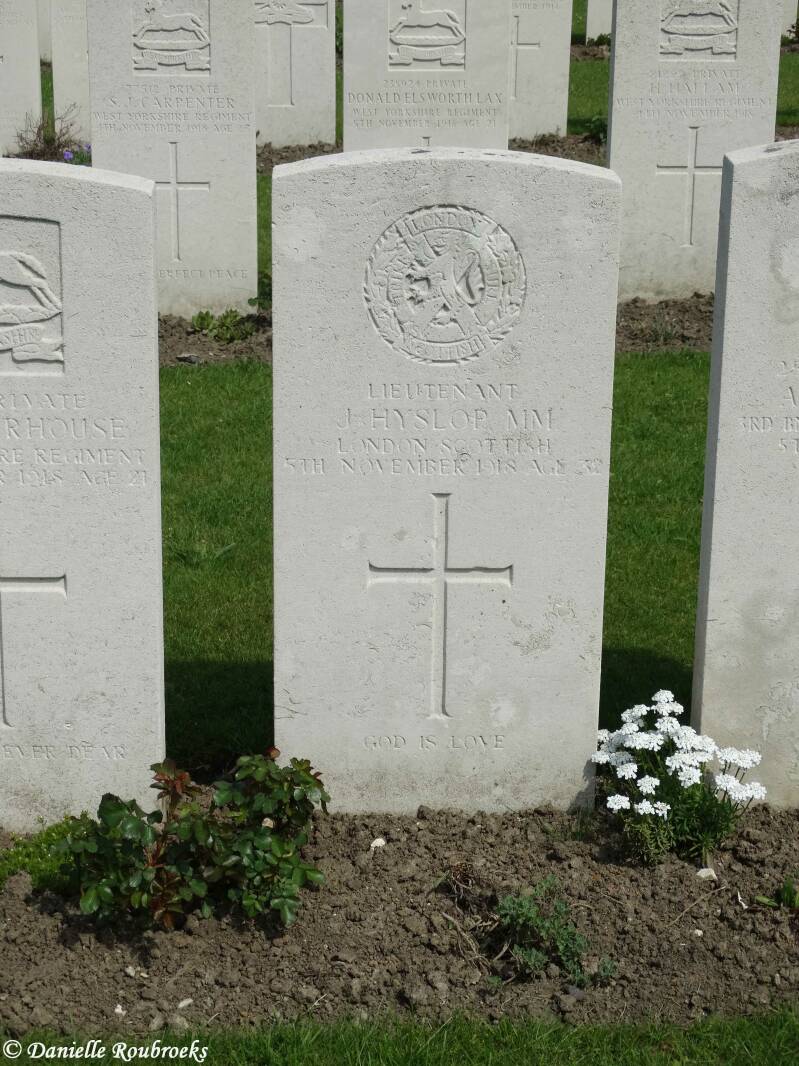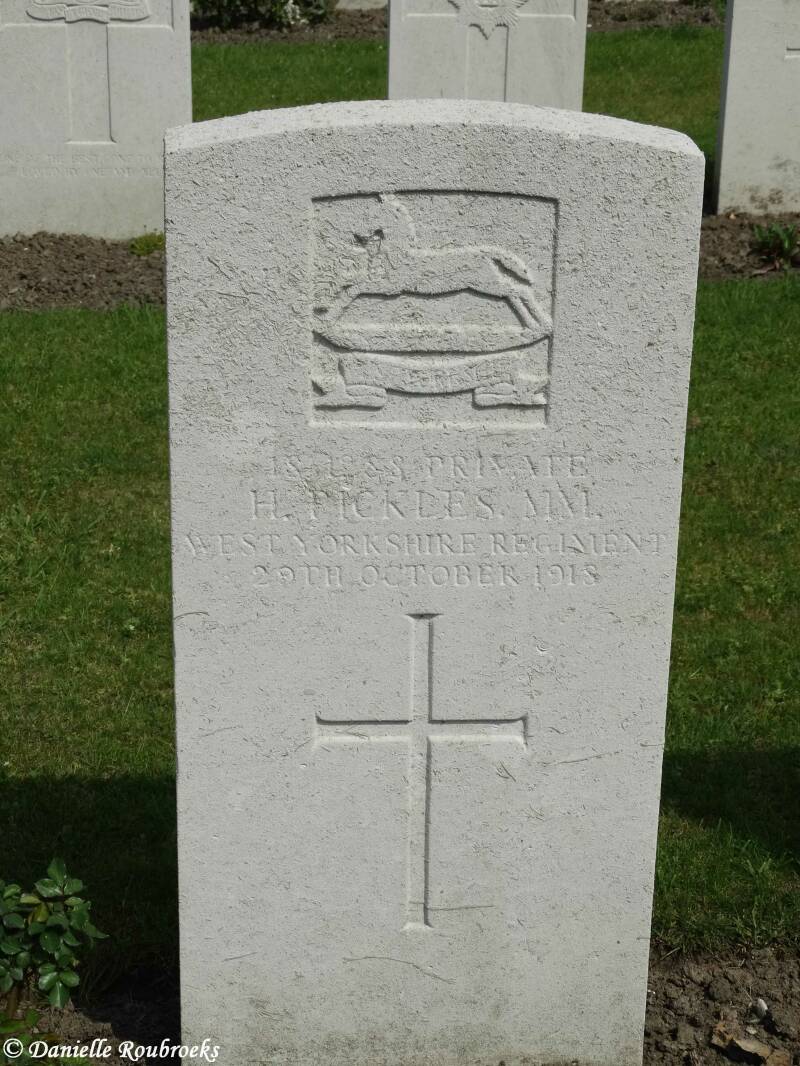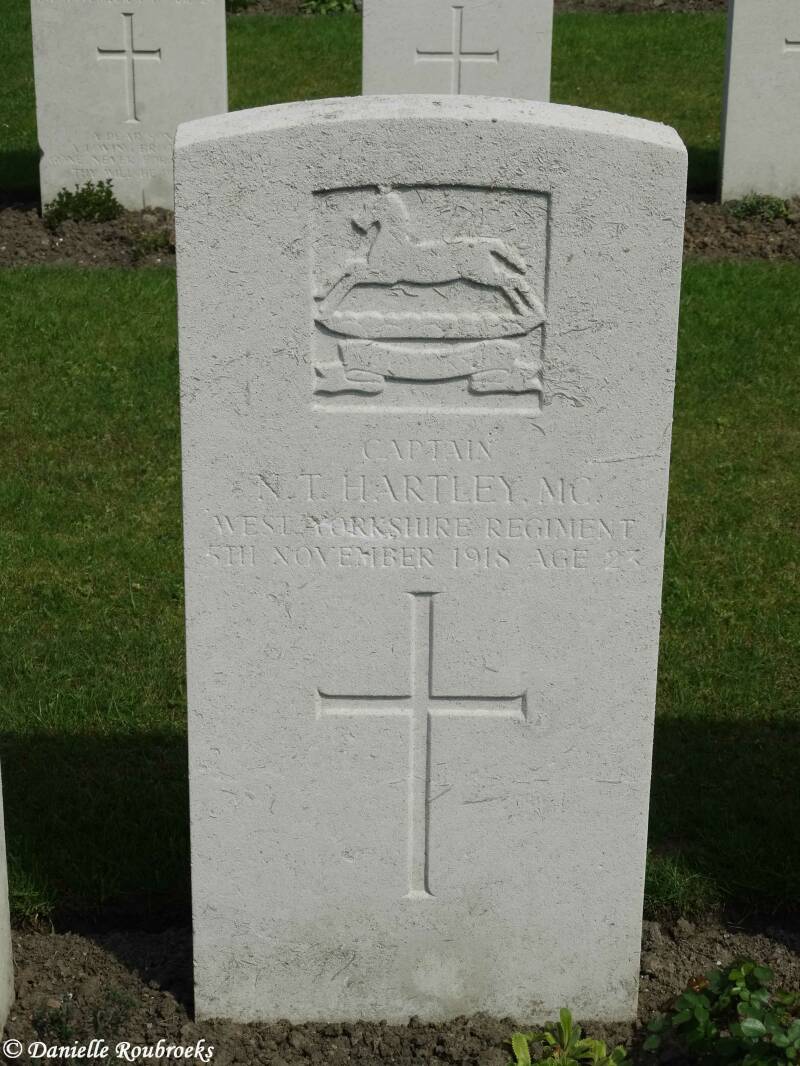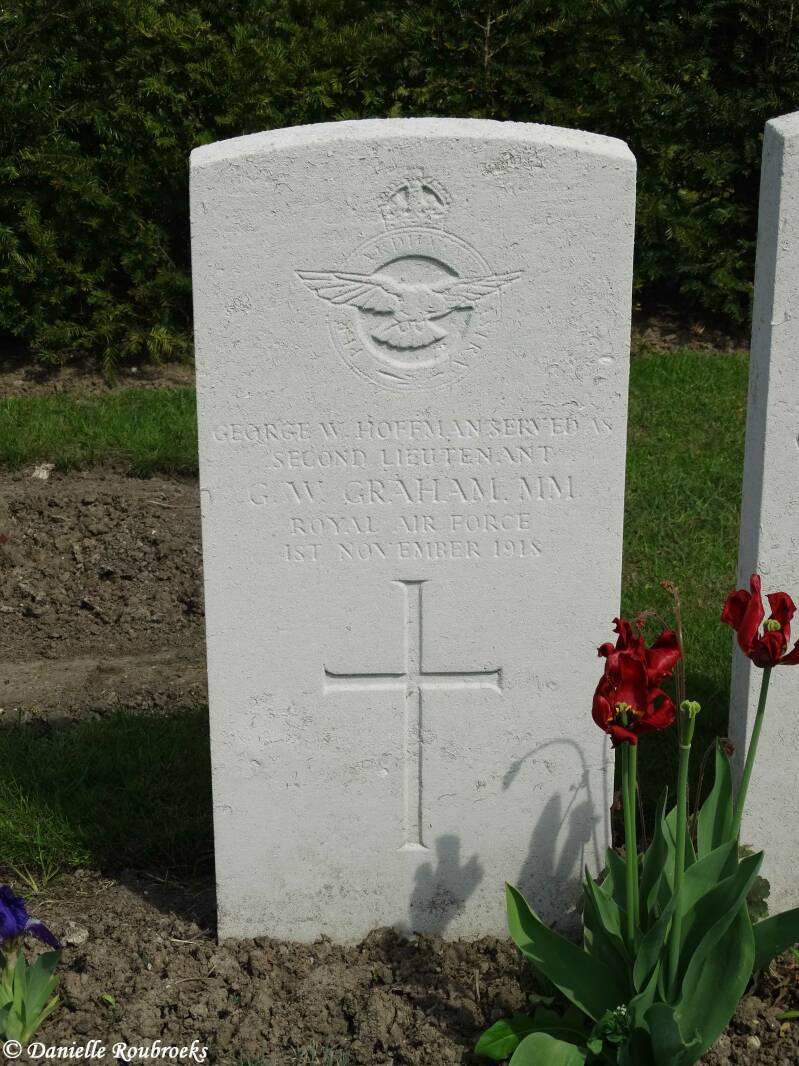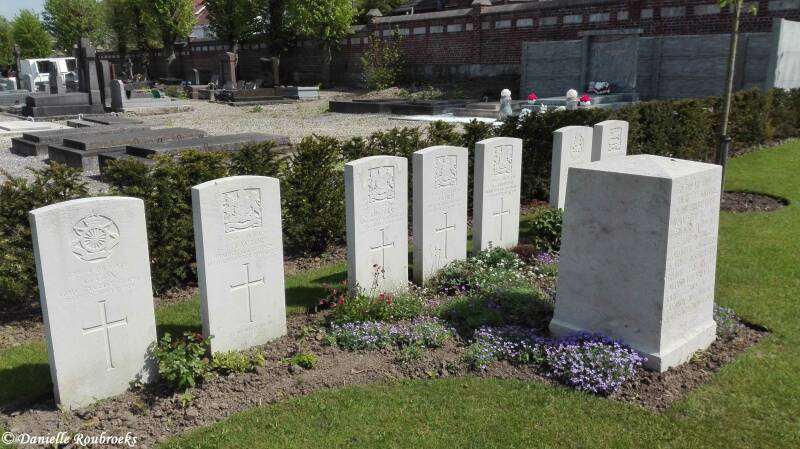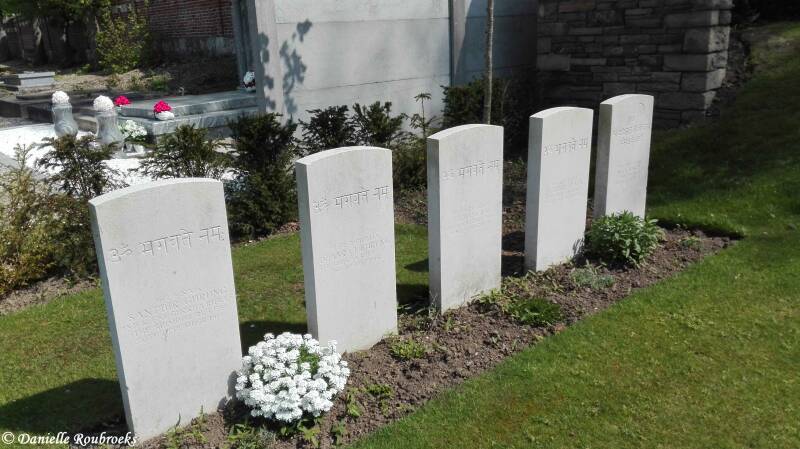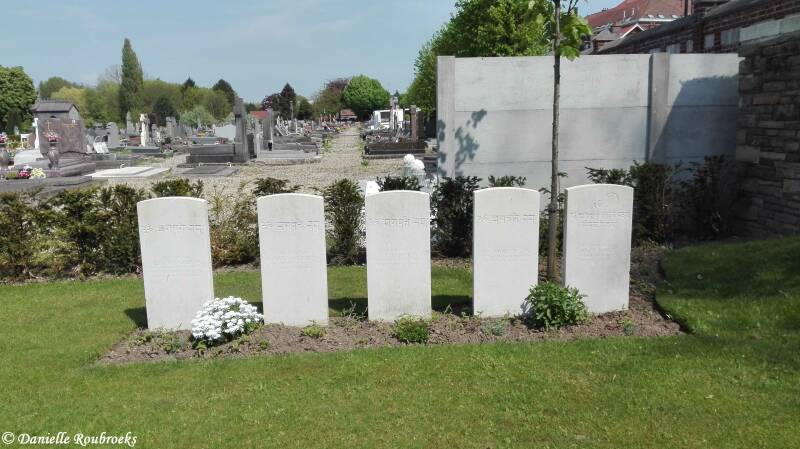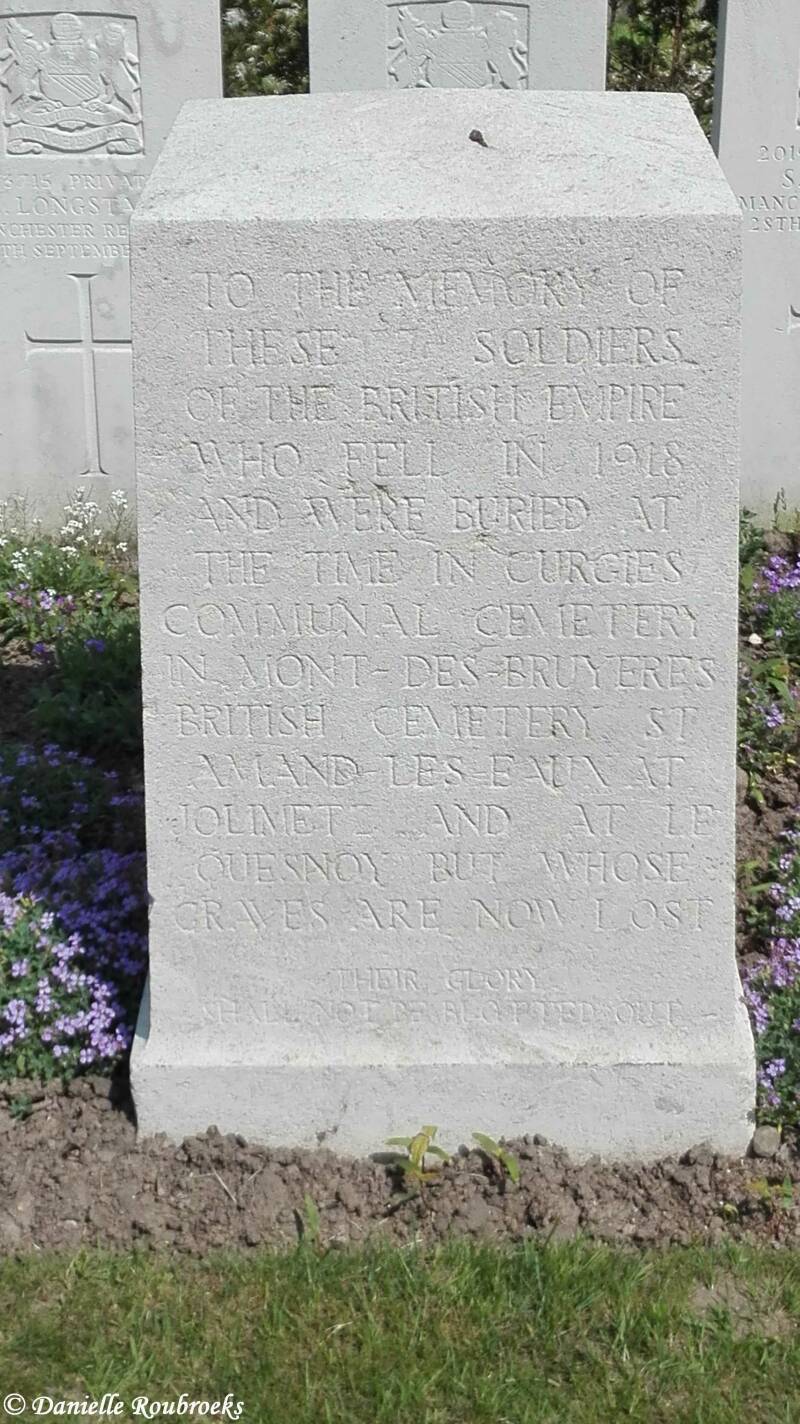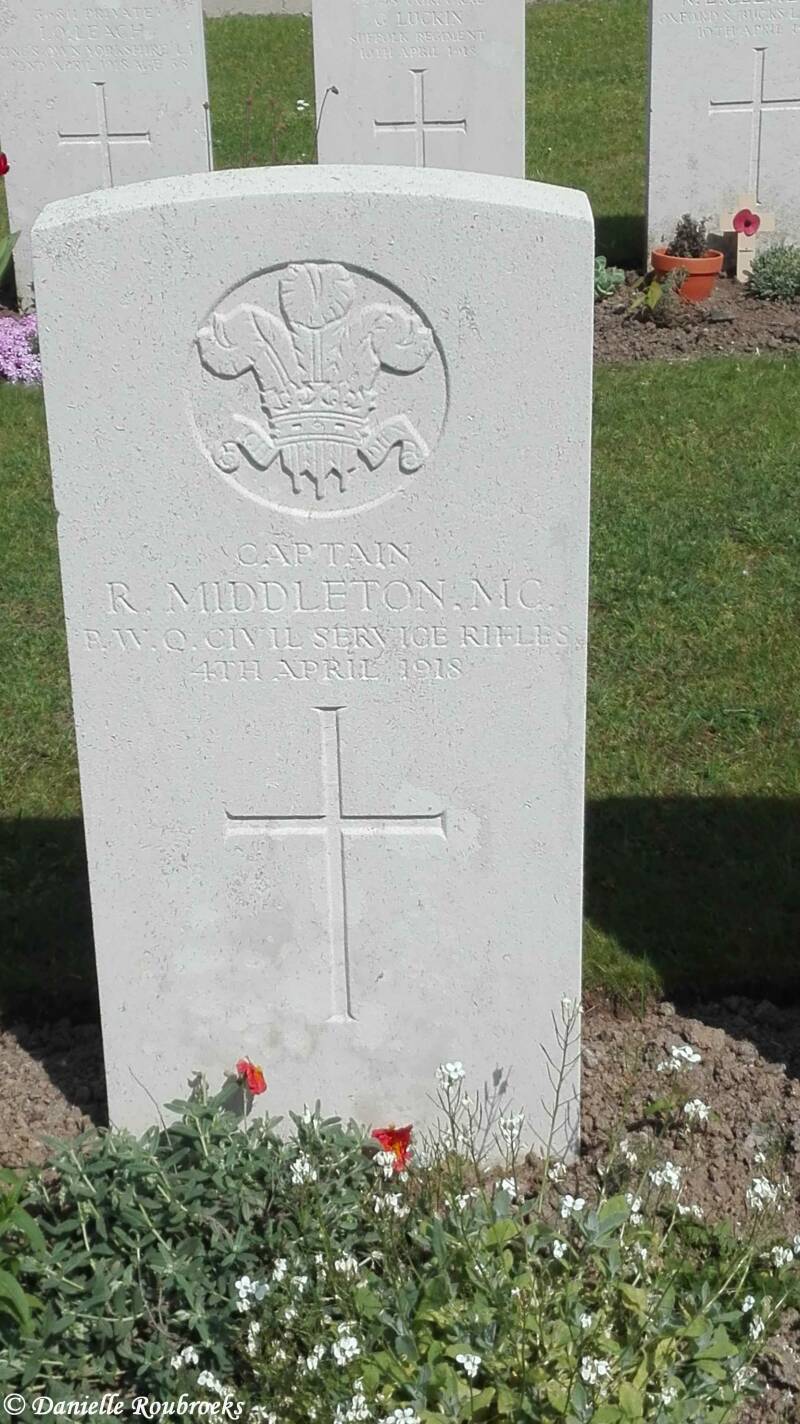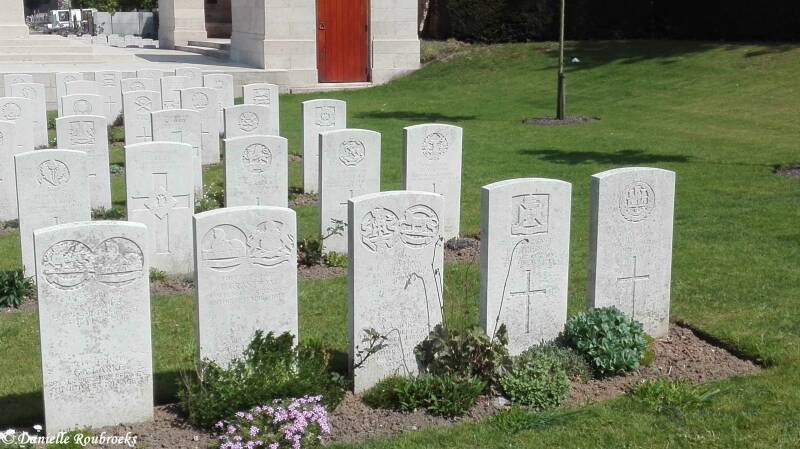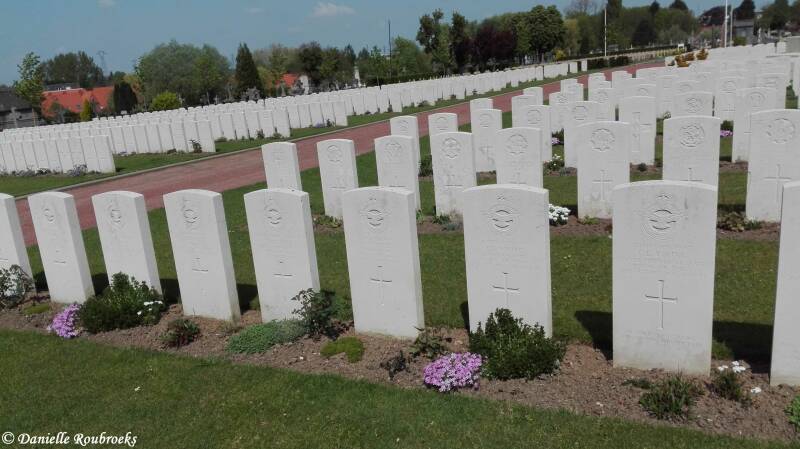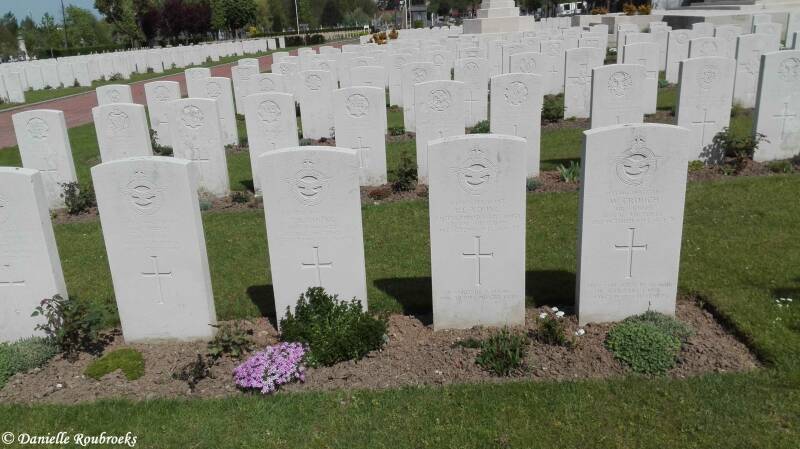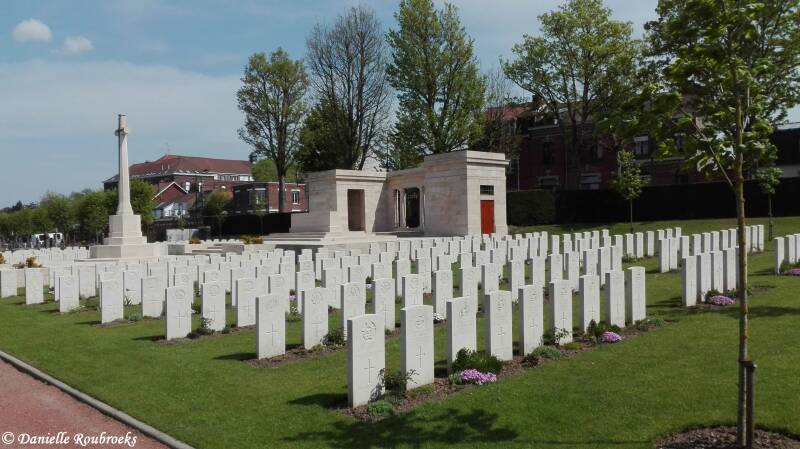Valenciennes (St Roch) Communal Cemetery
Historical Information (Source: CWGC)
Valenciennes remained in German hands from the early days of the First World War until 1-2 November 1918, when it was entered and cleared by the Canadian Corps; 5,000 civilians were found in the town. In November and December 1918, the 2nd, 57th, 4th Canadian and 32nd Casualty Clearing Stations were posted at Valenciennes and the last of them did not leave until October 1919. The Communal Cemetery of St. Roch was used by the Germans in August and September 1914 and an extension was then made on the south-east side. The Commonwealth plots were made adjoining the German: I and II contain the graves of October 1918 to December 1919; III, IV, V and part of VI contain the graves of 348 soldiers buried originally in the German Extension and 226 whose bodies were brought from other cemeteries or from the battlefields. The German Extension has since been removed and the Commonwealth plots are within the enlarged Communal Cemetery.
The cemetery now contains 885 Commonwealth burials and commemorations of the First World War. 37 of the burials are unidentified. Special memorials commemorate 19 casualties who died as prisoners of war, of whom nine are buried here (Plot IV, Row A.) and ten at Le Quesnoy Communal Cemetery Extension, none of whom could be individually identified; all are therefore commemorated at both sites. Other special memorials record the names of seven soldiers buried in other cemeteries whose graves could not be found. The cemetery also contains 34 burials from the Second World War, all but one of them airmen.
Served with
- United Kingdom (690)
- Canadian (152)
- Australian (30)
- Indian (5)
- New Zealand (5)
- South African (3)
Served in
- Army (808)
- Air Force (51)
- Navy (26)
An interesting feature from the 1939-45 War, is a memorial tablet of white marble affixed to the outside wall of the shelter building, commemorating the Commission's former gardener, the late Robert Armstrong. An ex-Irish Guardsman, Mr. Armstrong held an Irish passport and, as a neutral, was allowed to continue at work in the cemetery after the outbreak of war. His sympathies impelled him to assist Allied soldiers and airmen to escape, and he was arrested by the Germans at the end of 1943. The original death sentence was commuted to 15 years imprisonment, and he was deported to Germany, dying at Waldheim Camp, Saxony, in December, 1944. For his help to Allied escapees he was posthumously awarded the Medaille de Resistance Francaise, and the tablet was a voluntary token of remembrance from the people of Valenciennes and the surrounding district.


